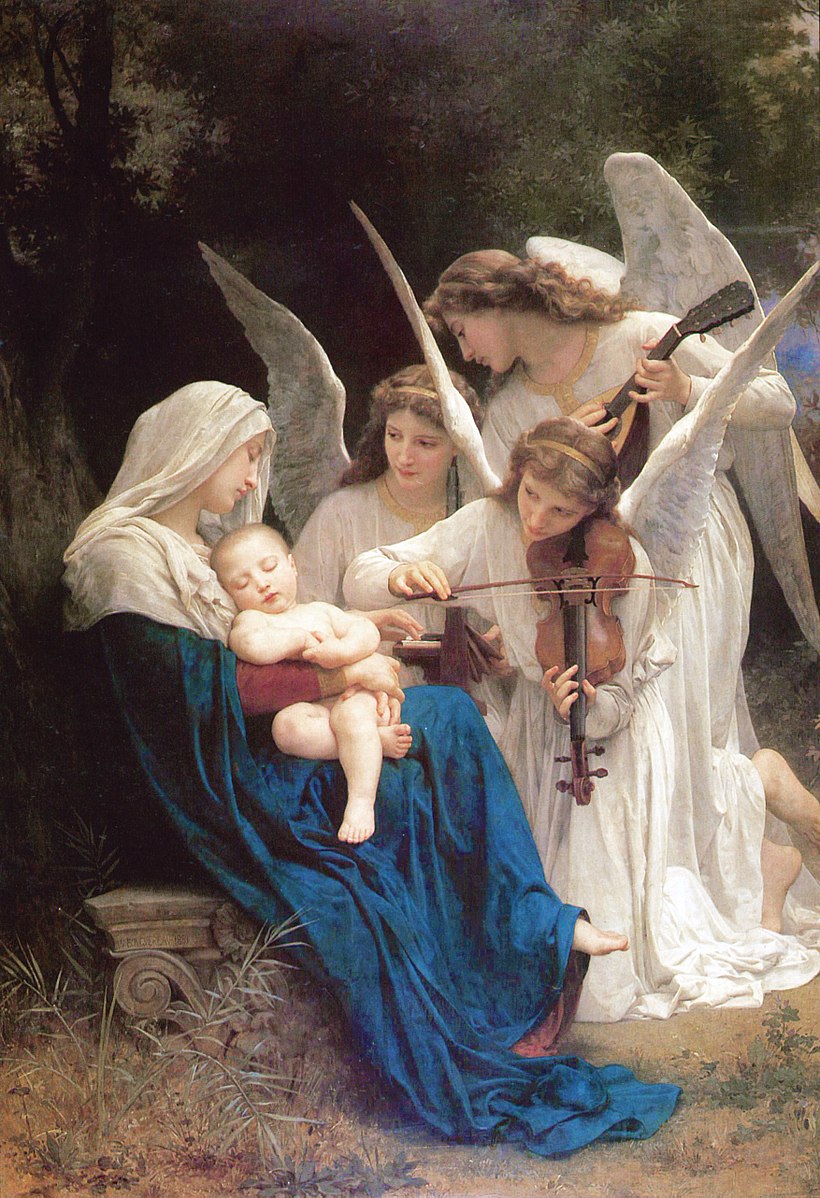Organist Randolph Nichols writes here from time to time on the works of painters inspired by music:
We’ve seen the image countless times on Christmas cards, parish bulletin covers and even coffee mugs, but scarcely give a thought to where, when and by whom it was painted.
Song of the Angels, an oil on canvas measuring 60 x 84 inches, was painted in 1881 by the French artist William-Adolphe Bouguereau (1825-1905), an artist who exemplifies, as perhaps no other, how sudden change in fashion can mar a seemingly unassailable reputation. He was as well-known and financially successful in the nineteenth-century as Pablo Picasso in the twentieth. Showered with official acclaim, popular with the art-buying public (especially American millionaires), he was also a highly regarded teacher. But towards the end of his life academic painting, i.e., the neoclassicist rendering of mythical and religious tableaux in which he excelled, fell out of favor. Bouguereau’s reputation ebbed and the artist was considered by many as nothing more than a huckster aiming to please the gullible middle-brow. Such an assessment, however, could not be sustained because Bouguereau, though indeed old-school and at odds with his now famous avant-garde peers, was a brilliantly talented draughtsman and manipulator of paint.
After its debut in France Song of the Angels came directly to the United States and years later (1940) was acquired by businessman and art collector Hubert Eaton to grace a private chapel of his business enterprise, Forest Lawn Memorial Park in Glendale, California. (The painting now resides in the Museum at Forest Lawn, framed by the liturgical enclosure that had held it in the chapel.)
Sentimental, yes, but a masterful composition: a mother and child sleep in a wooded setting while a trio of hovering musician angels offer strains of a lullaby left to the viewer’s imagination. The work demonstrates the artist’s uncanny skill at rendering realistic flesh tones and subtle gradations of white, the latter with a luminance more often associated with watercolor. Color and form lead the viewer’s eye from face to face, hand to foot in a life-like yet supernatural scene. You perhaps may not initially notice that the angels and Madonna are modeled on the same face, thought to be that of the artist’s wife Nelly who had passed away four years before this painting was finished (as had their 9-month-old son). This quiet scene therefore is most likely Bouguereau’s lasting tribute to his departed loved ones.

